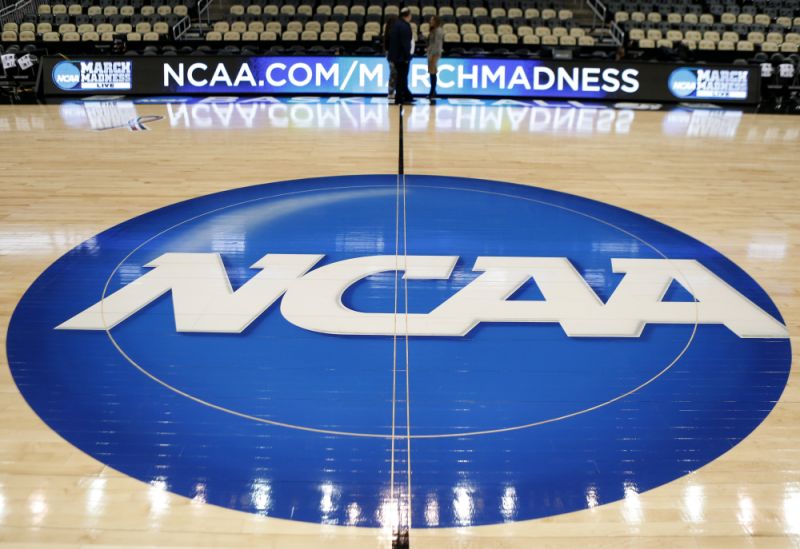They Don’t Need Money
Why college athletes should not be paid
College basketball corruption case brings back the amateurism argument.
March 16, 2018
On Sept. 27, 2017, four college basketball assistant coaches and six others involved with agencies and companies were arrested by the FBI on charges of bribery and conspiracy, after a federal investigation into corruption in the NCAA.
Fast forward to Feb. 23, 2018, Yahoo Sports came out with a report of over 30 college basketball players that were all offered compensation by schools and agent Christian Dawkins of ASM Sports, which is illegal.
Later that day, ESPN reported Sean Miller, head coach of Arizona, was caught on tape intercepted by the FBI discussing a $100,000 payment to then recruit Deandre Ayton, in order to ensure he signed for the Wildcats.
The whole case has brought the question: How has this happened? Why? And it has brought up the single most controversial rule in all of amateur sports: Should college athletes be paid?
Many say this incident would not be happening if we just gave college players compensation for their efforts in college athletics, but that is not what should be happening.
A top tier athlete coming out of high school has a choice they can make on where they would like to move onto next, and that is their decision to make. They can move onto college, or in some cases, such as basketball, they can turn professional right away in other countries, and make a fine amount of cash. The top 30 players in European leagues make between $1 million -$3 million per year, and their teams usually pay for food, rent, a car and any other necessary fees.
For a player to be eligible for the NBA Draft, they must be at least 19 years old at the end of the calendar year of the draft, and be one year removed from high school graduation. Therefore, a player could graduate high school, play a year internationally, then declare for the Draft. They do not have to go to college, it is their choice to play for a school and NCAA basketball.
If they do choose to stay domestically and choose a university that fits their desires, most of the time they are not paying a dime for anything on campus. Take for example Jalen Brunson of Villanova, who is a leading front-runner for the Wooden Player of the Year. Villanova University happens to be a prestigious private college in Philadelphia, and costs $68,232 per year. A total of $272,928 over the four years that he could compete, as the school has most likely allocated a full ride scholarship for him to play basketball. This also covers his room and board and dining plans. He also receives free clothing provided by Nike and all travel costs to and from games away from home. Those benefits can cost upwards of $10,000 each season, that is covered by the school. Brunson is now getting $320,000 from the school that he will never have to pay back, when an average student would be pressured into paying every penny plus interest if they were to take out a loan.
Title IX was a set of laws that was signed into effect on June 23, 1972 to prevent discrimination between genders in federally funded programs. If the NCAA were to allow players to earn paychecks, it would most likely violate regulations of Title IX. A male athlete would have to be paid as the same as a female athlete to avoid any penalties under Title IX, though in most cases, a school’s biggest revenue makers are football and men’s basketball. So most likely, the school would be willing to pay their athletes that bring in the money the most, which would be male football and basketball players, and violate Title IX laws.
Currently, less popular teams at universities are running on very low budgets and do not receive much to any funding, but these sports actually keep student-athletes from attending the school. Not counting basketball, baseball and football, approximately 121,000 male athletes participate in college sports in all three NCAA divisions, according to the NCAA website. Outside of basketball, volleyball and softball, the three most common sports in women’s athletics, there are 120,000 athletes. That means there are 240,000 student athletes that do not play a “major” sport, or 57% of all college athletes. Many of these sports that they compete in would have to be cut in order for a 100 person football to receive a paycheck, or a 15 man basketball team, just because they bring in the most revenue.
Why does a player already need a paycheck for playing a sport that he or she loves, and is willing to putting in the time and effort to strive to become the best they can be? Only 3.1% of all high school seniors go on to play college basketball in all three divisions of the NCAA. They should already be motivated to the point where they want to go out and play everyday for a team that they love, for teammates that are like family, for coaches, who are mentors for them, and to keep a spot on a competitive team in a highly contested sport.
Many employers look at resumes, and as they see a college athlete on one, it boosts their chances of receiving the job. Athletes learn many life skills such as teamwork, perseverance and hard work, and should not need compensation for their efforts.







